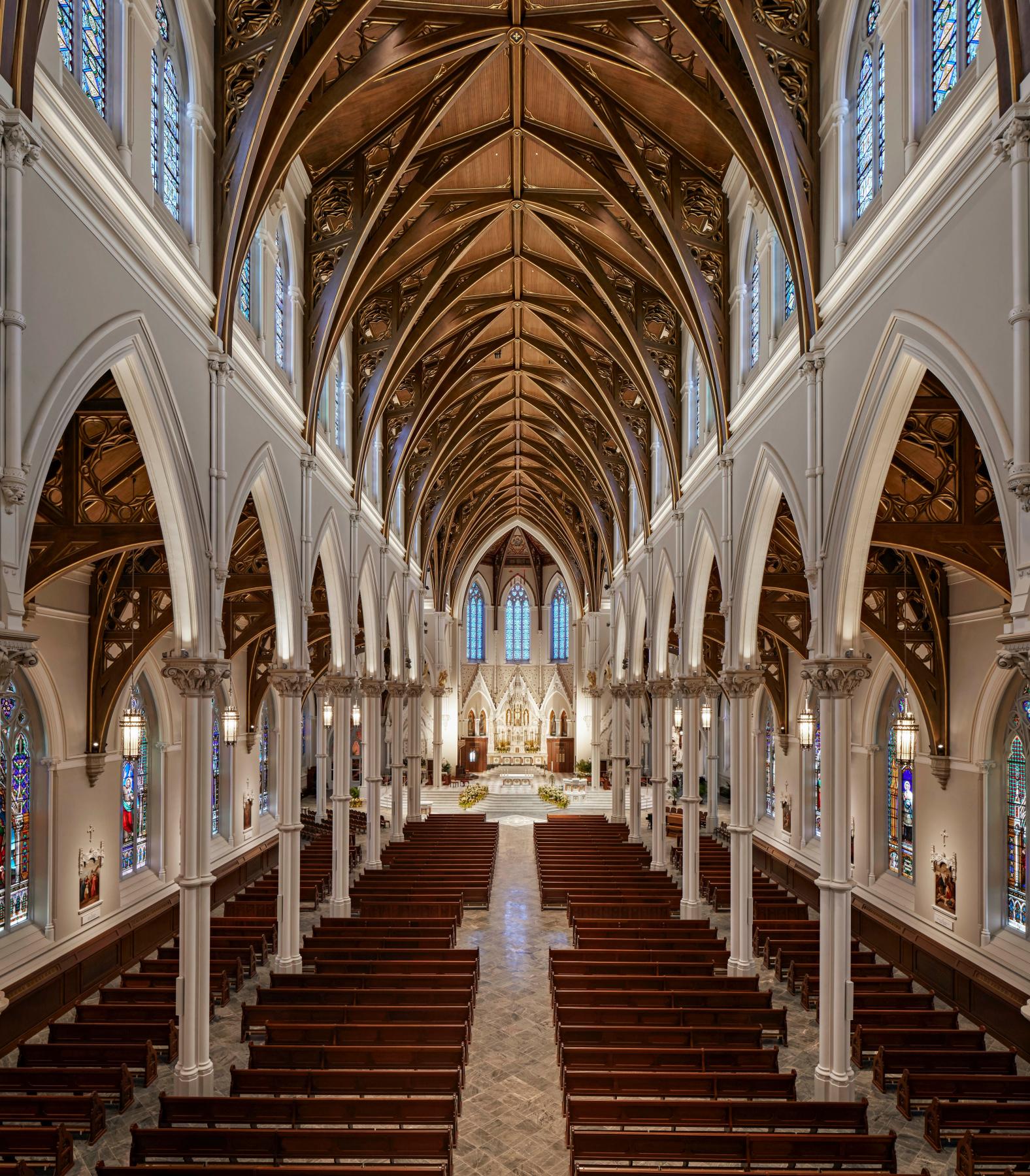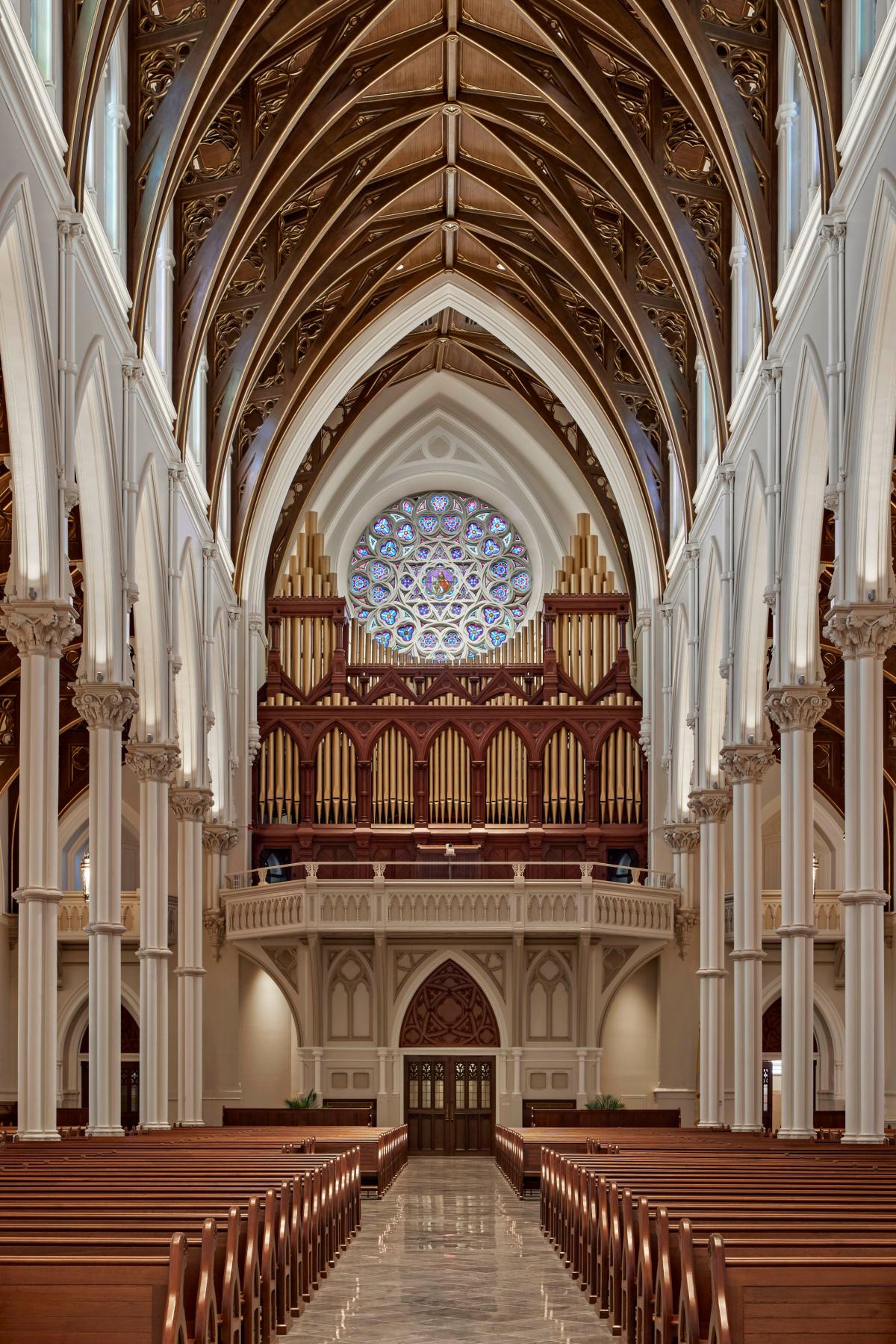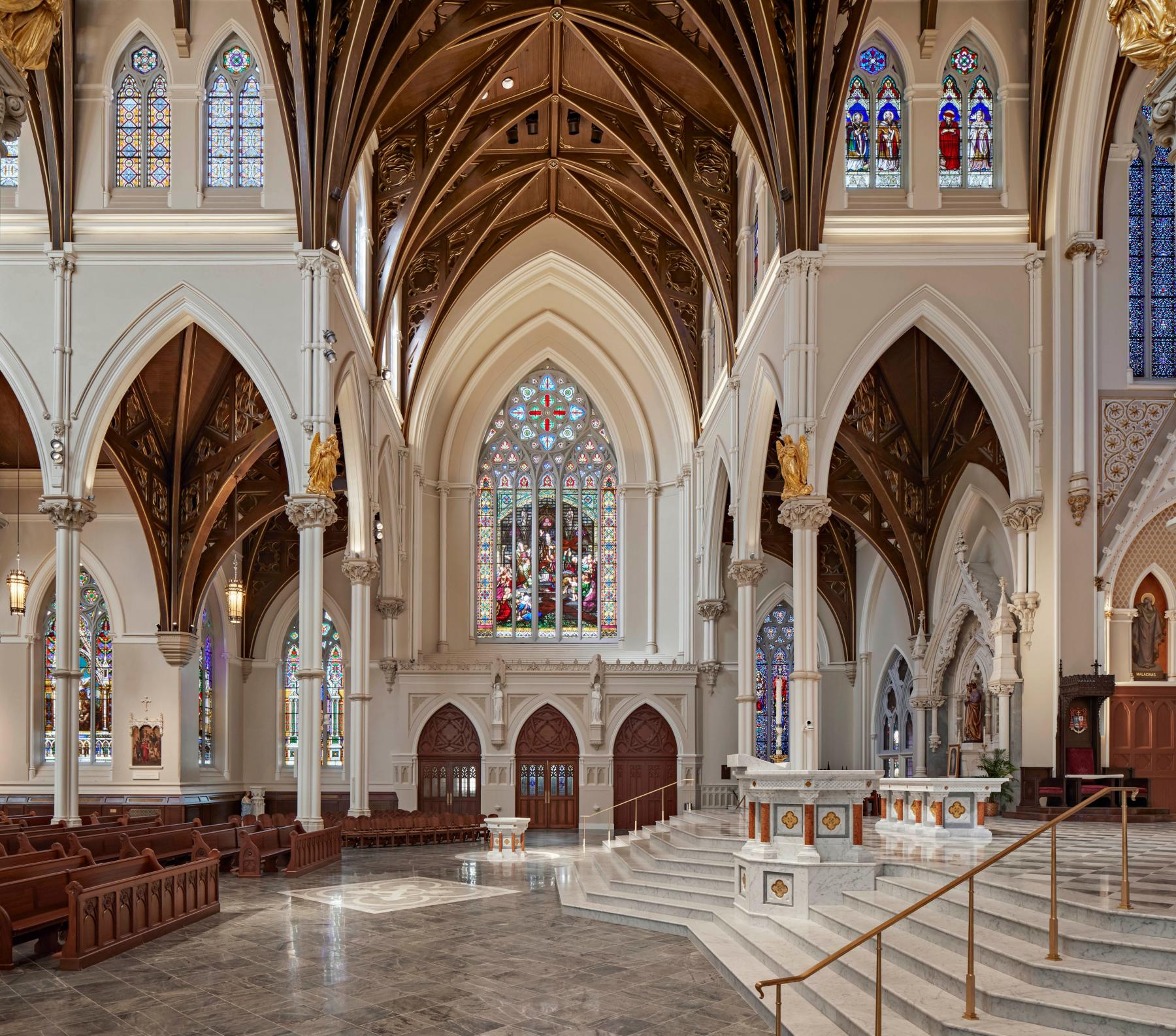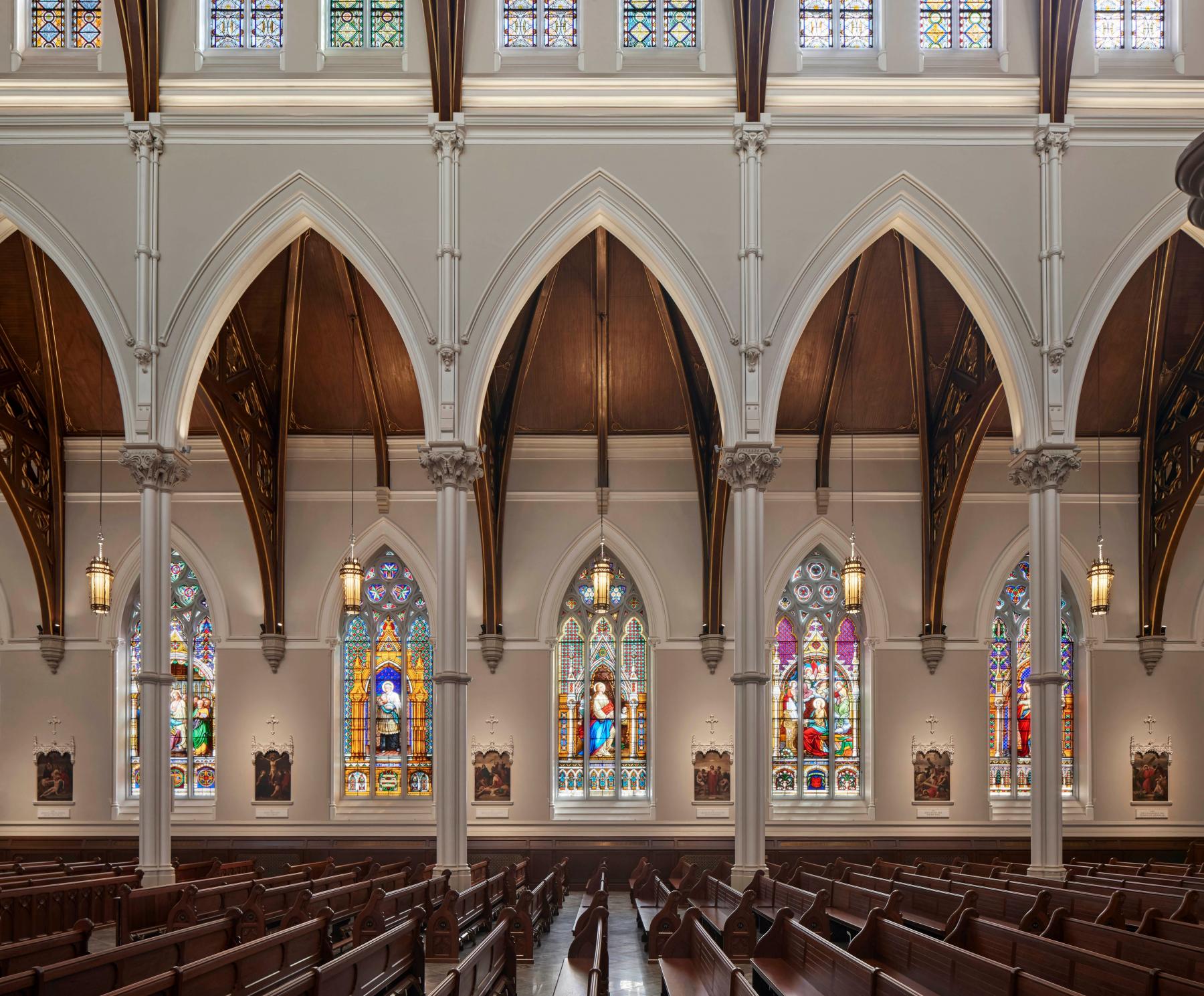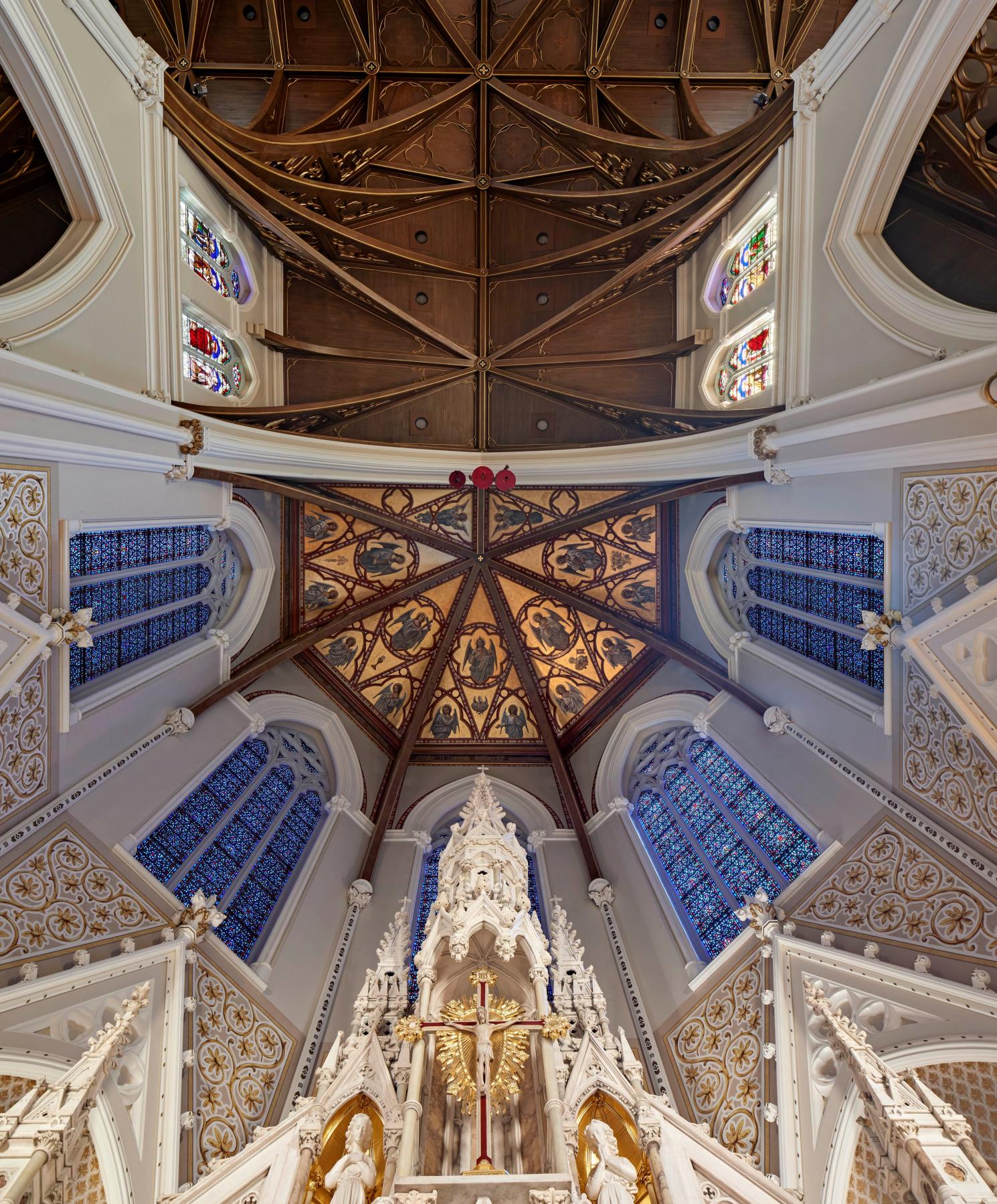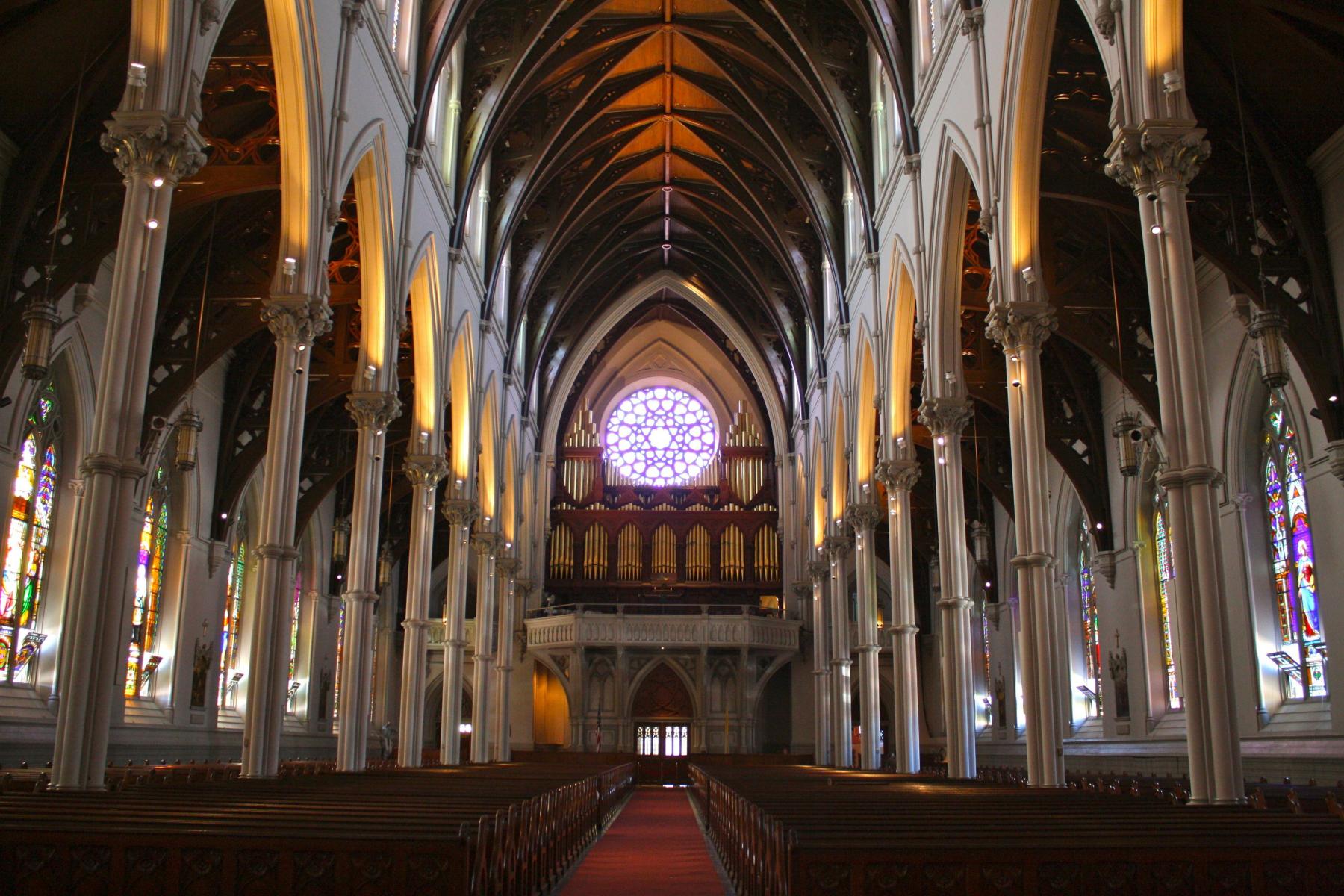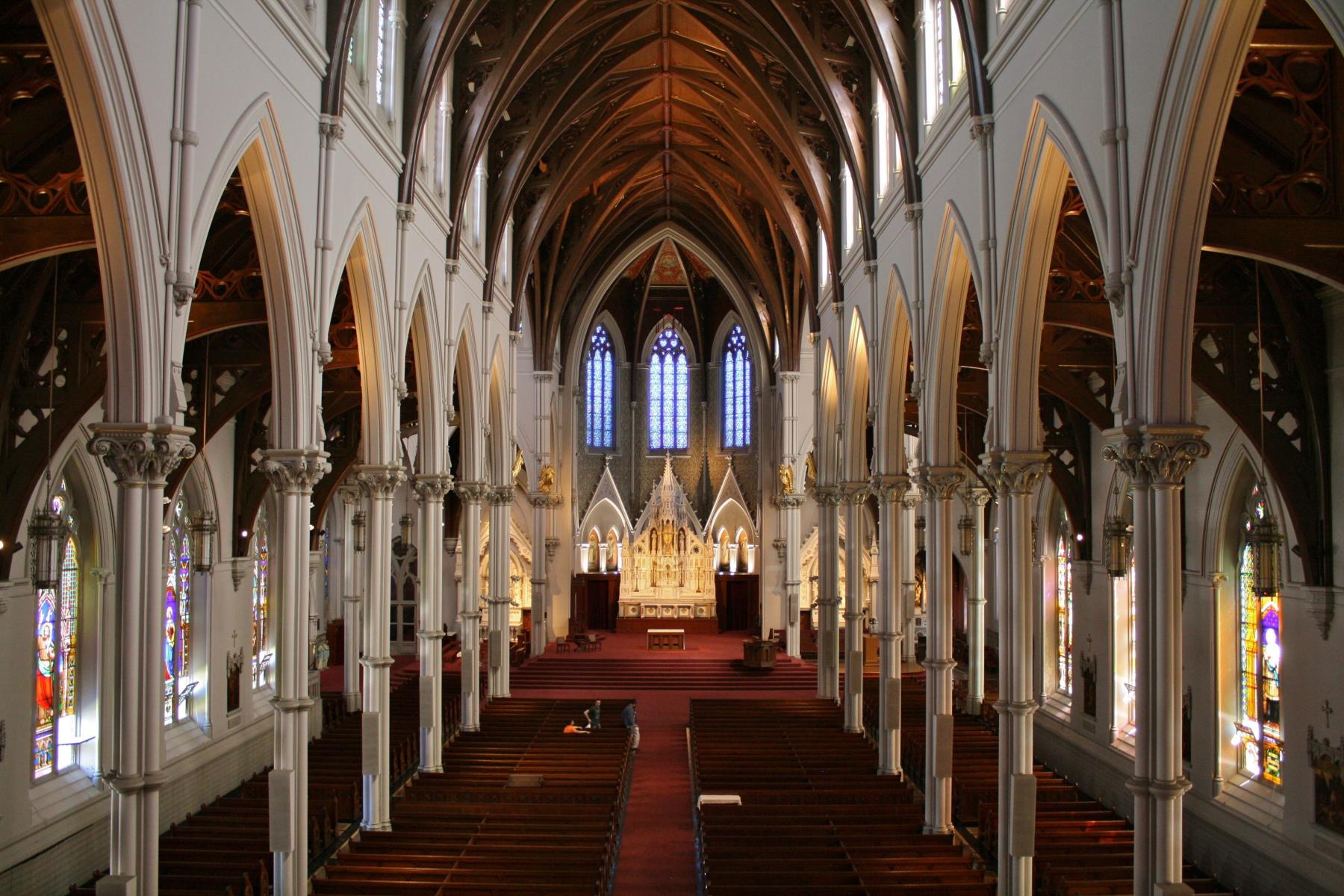42.3407863, -71.0696013
Film made by Padriac Farma
The Cathedral of the Holy Cross, completed in 1875, stands in the South End like a monument to the history of the Catholic immigrant community. Sensitive upgrades bring this grand space into the modern era while preserving its rich details and better engaging the community.
The original Holy Cross Church was designed by Charles Bulfinch and sat on Franklin Street just on the edge of the Tontine Crescent. It was built between 1800-1803 and would become a cathedral in 1808. With the growth of Catholic immigrant communities, particularly the Irish Catholic population, there was a need for a larger church to house an ever-growing congregation. In 1860 Irish-American Architect Patrick Keely was selected to design the new cathedral, and after a delay due to the Civil War, ground was finally broken in April 1866. Incredibly, the money for this monumental and expensive new Gothic Revival Cathedral was raised by the community, and keeping with local influence, the primary construction materials were Roxbury puddingstone and grey limestone from quarries in nearby Quincy. This congregation has often championed community and solidarity particularly in national tragedies, for example, making a place for those grieving the assassination of JFK and more recently, the vigil for the Boston Marathon Bombings with words from former President Barack Obama. The church community has also struggled through the church abuse scandal. Its history is complex and part of Boston’s story. Keeping with its themes of intercultural community, the Cathedral currently celebrates traditional masses in both English and Spanish, Ethiopian Eritrean Ge’ez Rite masses, and has members from many different cultures.
After over a century of life, the Cathedral was tired and in desperate need of a top-to-bottom modernization program to allow another century of engaged community life. The overarching goal of the renovation was to refresh the space, make the services more inclusive, and to fully modernize all systems. The floor of the Cathedral, previously wood covered by linoleum, was replaced by grey quartzite in the nave and alternating grey and white Italian marble in the sanctuary in order to produce a timeless look with low maintenance needs. While giving the completely new interior finishes of creams and whites to lighten the space, many details were found that had been painted over. All of these hidden architectural details on the interior–from the murals on the walls, to the detailing on the ceiling trusses–were emphasized using red and gold paint. The pews were adjusted to enhance accessibility. The altar was centered and moved closer to the congregation, the bishop’s seat moved, and the choir relocated to transitional seating with the congregation to make a more inclusive service. A lift and ramp were also installed around the sanctuary for greater accessibility. New lighting has transformed the space. Original hanging fixtures were restored, and more subtle LED lights were installed to make the space brighter while enhancing the beauty of the cathedral. A new air conditioning system and sprinkler system were also installed for the comfort and safety of those inside. The exterior of the cathedral was restored with new trim and backlighting for the cathedral’s windows so that the remarkable collection of stained glass glows to the exterior of the cathedral at night in the same way it lets light stream inside during the day.
“Monumental civic architecture of all types helps define a city, yet today many congregations struggle to keep their facilities both maintained and modernized. Periodic large investments like that undertaken by the Cathedral of the Holy Cross preserves this architectural gem and home to immigrant populations for future generations,” says Greg Galer, Executive Director of the Boston Preservation Alliance.
Owner/Developer:
Roman Catholic Archdiocese of Boston
Architect:
General Contractor:
Project Team:


